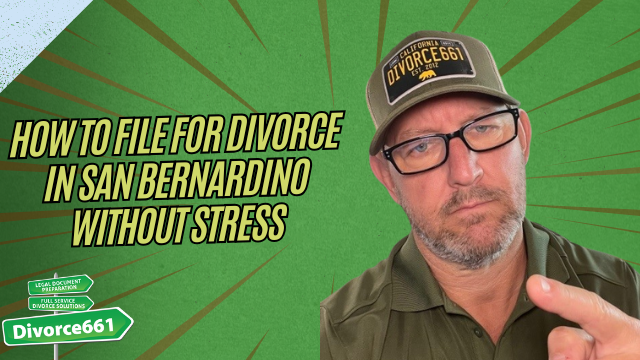What to Do If Your Divorce Papers Are Rejected in San Bernardino County
Hi, I’m Tim Blankenship with Divorce661. If your San Bernardino divorce paperwork was rejected by the court, don’t panic — you’re not alone. Paperwork rejections are one of the most common reasons divorces are delayed, but the good news is they’re usually fixable with the right approach. Below I’ll walk you through why rejections happen, a real client example, practical steps to get your case back on track, and how my team can help you resolve the issue quickly.
Why San Bernardino Courts Reject Divorce Paperwork
Rejections typically happen because something was filled out incorrectly, a required form was missing, or the information didn’t meet the court’s strict formatting or procedural standards. Even small mistakes can cause your judgment package to be returned without approval.
- Missing required forms or attachments (e.g., financial disclosures)
- Incomplete fields or unchecked boxes
- Incorrect legal language in property division or judgment documents
- Formatting or procedural issues that don’t match county rules
- Signatures, dates, or notary requirements not completed correctly
“Paperwork rejections are one of the most common reasons divorces are delayed.”
Real Client Story: From Two Rejections to an Approved Judgment
We recently worked with a client in San Bernardino whose divorce judgment had been rejected twice. The court returned the file because disclosures were incomplete and the property division language was incorrect. The client was understandably frustrated and unsure what to fix.
We reviewed the entire file, corrected the disclosure issues, revised the property division language to match the court’s requirements, prepared a new judgment package, and resubmitted. The judgment was approved within a few weeks — and the client was able to move forward without further delay.
What to Do Right Now If Your Papers Are Rejected
If you received a rejection notice from the court, follow these steps to resolve it as quickly as possible:
- Read the rejection notice carefully. The court will usually indicate what is missing or incorrect.
- Compare the notice to your file. Identify the exact forms, pages, or language the court flagged.
- Correct the specific issues. Fix missing information, check boxes, signatures, and any incorrect legal wording.
- Confirm formatting and local rules. San Bernardino County has procedural and formatting expectations — make sure your packet follows them.
- Gather any missing documents. Examples include income and expense declarations, property disclosures, and any required attachments.
- Resubmit the packet correctly. Double-check everything before filing to avoid another rejection.
- Get professional help if needed. If you’re unsure what the court wants, an experienced service can review and correct the packet for you.
Preventing Rejections: A Quick Checklist
- Use the court’s most current forms and local mandatory forms.
- Complete every required field and check every checkbox.
- Carefully review legal language for property division and support terms.
- Include all required attachments (e.g., financial disclosures, exhibits).
- Verify signatures, dates, and any notarization requirements.
- Follow the county’s formatting rules (margins, page numbering, copy requirements).
- Keep a copy of everything you file and the court’s rejection notice for reference.
How Divorce661 Can Help
At Divorce661, we specialize in taking over cases that have stalled because paperwork was rejected. Our process is straightforward:
- We review your entire file to find the issues that caused the rejection.
- We correct the errors and prepare a new judgment package that meets court standards.
- We resubmit the documents properly so you don’t have to deal with the court alone.
We work on a flat-fee basis — no hourly attorney costs — and aim to get rejected files approved fast. In many cases, we’re able to have a corrected judgment approved within weeks.
If your divorce paperwork was rejected in San Bernardino County and you want it done right this time, visit Divorce661.com to schedule your free consultation. We’ll get your case back on track quickly and with less stress.
Conclusion
Getting a rejection from the court is frustrating, but it doesn’t have to derail your divorce. Most rejections are fixable by addressing the specific issues the court identifies, following local rules, and double-checking every item in your packet. If you’d like help, my team and I at Divorce661 are ready to review your file, correct the problems, and resubmit your paperwork so you can move forward.
Remember: stay calm, read the court’s notice, and take targeted action — you can get this resolved.










